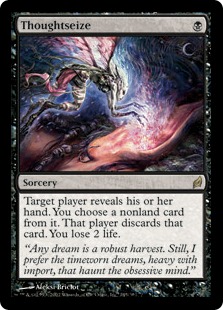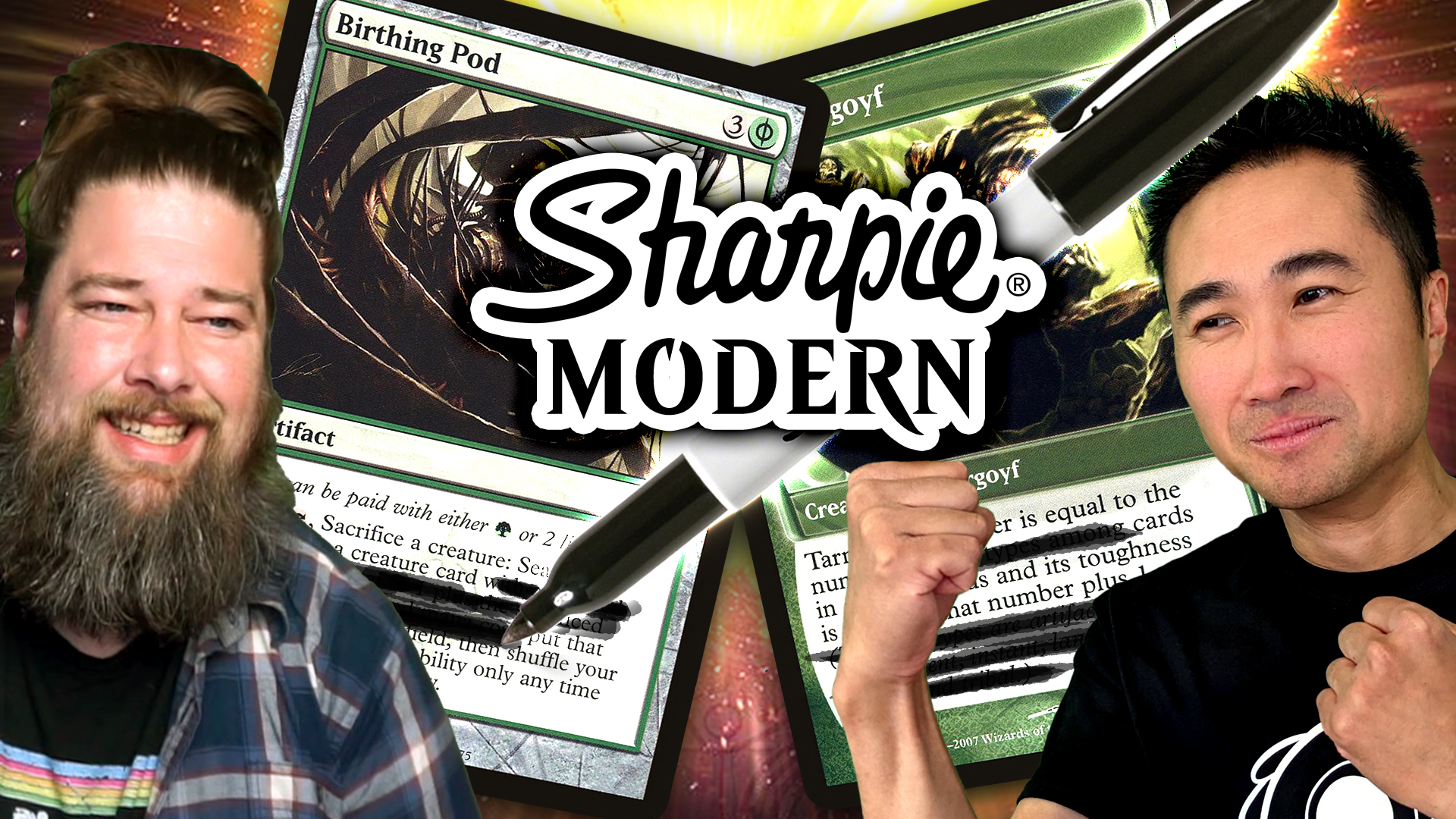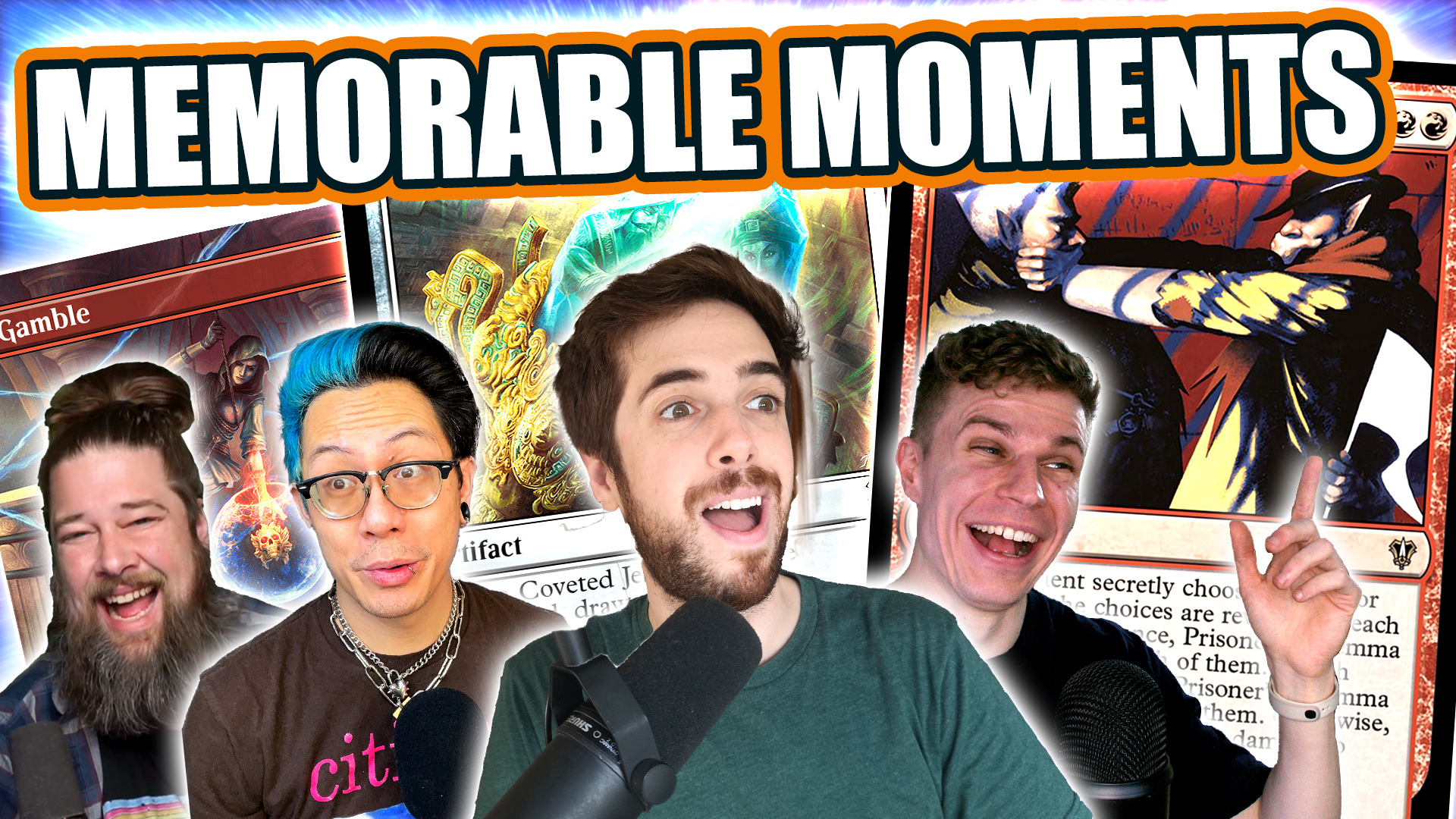Brewer's Minute: Deep Delve—Targeted Discard
Hey everyone! It's time for another Brewer's Minute! This week, we're trying out something new—Deep Delve, which delves deeply into one specific group of cards. First up is targeted discard like Duress, Thoughtseize, and Inquisition of Kozilek. The basic idea of the subseries is to discuss everything you need to know about the group of cards, from what it is to how it's good and bad, along with where it's played and how to play it. Make sure to let me know what you think of the Deep Delve idea, because we can do some more in the future if you like it. Anyway, let's talk some targeted discard!
Don't forget: if you enjoy the series (and haven't already), make sure to subscribe to the MTGGoldfish YouTube Channel!
What Is It?




What is targeted discard? By targeted discard, we're referring to any card that allows you to target a player or opponent and choose a card (or cards) to take from their hand. Cards like Doomfall count, even though the opponent is technically exiling the card rather than discarding it, but cards like Mind Rot and Hymn to Tourach do not because you don't have any control over which cards your opponent discards. In Modern, the two most popular options are—by far—Thoughtseize and Inquisition of Kozilek, while in Standard, we have narrower (or most expensive) targeted discard like Duress, Doomfall, and Harsh Scrutiny.
What Makes It Good?
- Targeted discard answers hard-to-deal-with cards. Most targeted discard is black, and while black is very good at dealing with some things (creatures and planeswalkers), it's very bad at dealing with others (artifacts and enchantments) once they are on the battlefield. Targeted discard gives black an answer to these hard-to-deal-with permanents. It also gives decks a way to deal with spells. Take Approach of the Second Sun. A Mono-Black deck would almost never beat an Approach of the Second Sun without the ability to attack the opponent's hand with cards like Duress.
- Targeted discard lets you deal with expensive cards with cheap cards. Part of the power of targeted discard is that it allows you to answer powerful expensive threats (like Approach of the Second Sun or Gifts Ungiven) for a low cost (often a single mana), so in some sense, you are trading up in mana. However, it is important to mention that you are not really gaining any tempo from this trade, since when you take a card from your opponent's hand, they are never spending their mana to cast it (unlike a Counterspell, for example, which has a weird Time Walk effect on the opponent, since you not only stop the spell but also force your opponent to spend mana attempting to cast it).
- Targeted discard gives you a Turn 1 play. This is especially important in Modern, where most decks start their game plan on Turn 1. If you don't do anything on Turn 1, you are starting off behind your opponent by default. Targeted discard like Thoughtseize and Inquisition of Kozilek is the go-to Turn 1 play for many control and midrange decks.
- Targeted discard gives you an information advantage. While taking a card from your opponent's hand is great, targeted discard give you the additional value of seeing your opponent's entire hand, which allows you to play more efficiently, since you know which cards your opponent is likely to play over the coming turns.
- Targeted discard protects you from unfair decks. Part of the reason targeted discard is so popular in Modern is that Thoughtseize is basically the Force of Will of the format, being the best option to make sure you don't die on Turn 3 to a deck like Storm or to a Through the Breached Emrakul, the Aeons Torn. In some sense, this happens in Standard as well, with Duress protected fair decks from the slow but hard-to-stop Approach of the Second Sun kill.
What Makes It Bad?
- Targeted discard is often a dead topdeck in the late game. One of the biggest drawbacks of discard in general is that your opponent needs cards in hand for it to be effective. As such, the biggest downside of putting targeted discard in your deck is that in the late game when both players are in topdeck mode, your opponent will be drawing and casting powerful spells, while you'll be drawing targeted discard some percent of the time, which is quite literally worse than a land.
- Targeted discard is matchup dependent. This is mostly a problem in Standard, where discard is narrow. While Duress is great against spell-heavy control decks, it will do nothing all game long against creature decks with few non-creature spells. While the breadth of Modern discard makes this less of a problem, there are still matchups where Thoughtseize isn't very good, such as against decks like Dredge that want cards in their graveyard or against Burn, where the damage you take is relevant.
Where to Play It
In Modern, targeted discard like Thoughtseize and Inquisition of Kozilek is among the most played cards in the format, and if you are playing black, you need a good reason (like Living End cascade shenanigans) to start your deck without these cards. The typical Modern deck plays about six targeted discard spells in the main deck, with the exact split depending on the specific build.
In Standard, Duress will show up in just about every black deck but typically as a sideboard card, since it is more matchup dependent. This is true of not just Duress but most discard spells that see play in Standard, since they are either expensive (like Doomfall) or narrow (like Duress and Despise).
How to Play It
- On Turn 1: We talked about how part of the power of targeted discard is that it gives you a Turn 1 play, so firing off your Duress or Thoughtseize right away is often a good plan.
- Wait as long as possible: Depending on the matchup, it's sometimes best to wait and try to time your targeted discard spell for the turn before your opponent makes their key play. For example, in Modern, Scapeshift is lethal once the opponent hits seven lands, so rather than casting your discard on Turn 1, it might be better to wait until the turn before your opponent is going to kill you to give your opponent more time to draw into their key spell. Casting a Turn 1 Thoughtseize only to have your opponent draw Scapeshift the next turn (and kill you a few turns later) feels pretty bad.
- Force through an important spell: The last main technique for playing targeted discard is to try to cast it on the same turn as one of your important spells. Let's say you're playing against control in Standard and really need to resolve a Chandra, Torch of Defiance. You can Duress on Turn 1, take a counterspell, and hope your opponent doesn't draw another before you cast Chandra, Torch of Defiance on Turn 4, but it's often better to wait until Turn 5, cast your Duress (which will either take a counter from your opponent's hand or force them to spend their mana to cast a counter on your Duress), and then follow up by resolving your Chandra, Torch of Defiance right away while your opponent doesn't have the mana or cards to defend themselves.
Conclusion
Anyway, that's all for today! What did you think of the Deep Delve idea? How do you play targeted discard? Let me know in the comments. As always, leave your thoughts, ideas, opinions, and suggestions, and you can reach me on Twitter @SaffronOlive\ or at SaffronOlive@MTGGoldfish.com.













